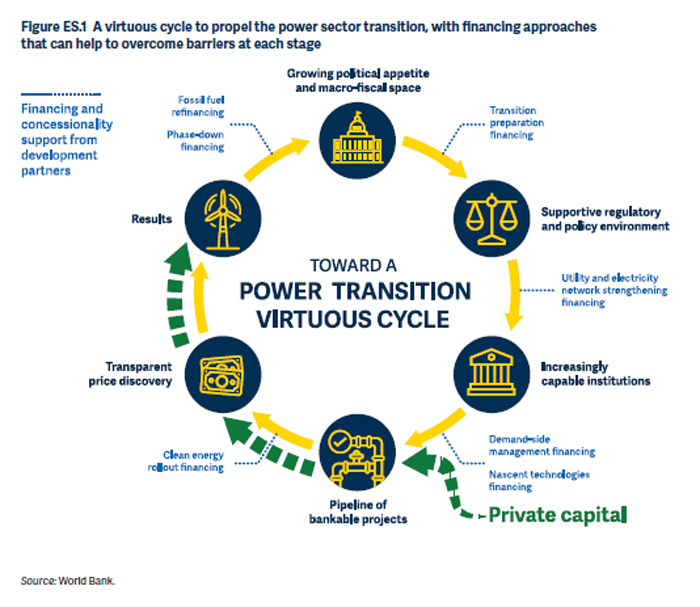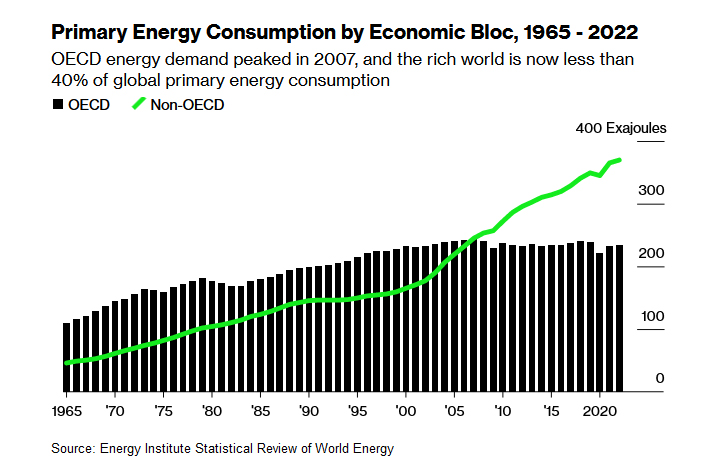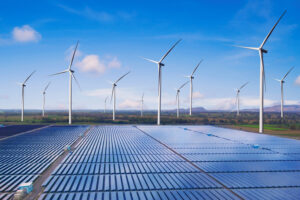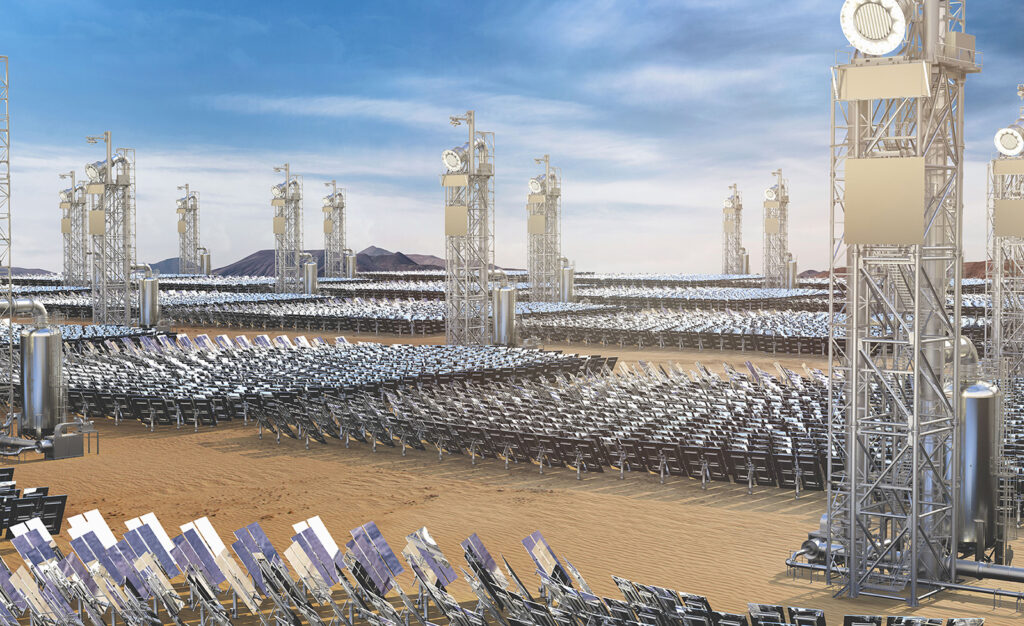WORLD BANK: DEVELOPING COUNTRIES CAUGHT IN ENERGY POVERTY TRAP
 Energy consumption in developing countries is at an all-time high and growing, but this is both good news and bad news. The good news is that this signifies increased economic activity, growth and prosperity. The bad news is that most of this increased consumption is still supplied by fossil fuels.
Energy consumption in developing countries is at an all-time high and growing, but this is both good news and bad news. The good news is that this signifies increased economic activity, growth and prosperity. The bad news is that most of this increased consumption is still supplied by fossil fuels.
A recent report by the World Bank explains why. In short, many low- and middle-income countries (LICs and MICs) are caught in what the bank calls a poverty trap. This is a vicious cycle where they are unable to afford the high up-front costs of switching to clean energy, and thus are locked into higher costs and recurring payments for fossil fuels.
The report says, “Up-front capital accounts for a high proportion of the overall costs of renewable energy and energy efficiency, whereas coal and gas power have lower up-front capital requirements but incur higher fuel costs over their operating lifetimes. Combined with the higher cost of capital for LICs, the cost structure of renewables has a distorting effect on choices about how to build electricity generation capacity.”
Capital constraints
Adding to this effect is the fact that capital is more costly in developing countries than in the rich world, when it is available at all. The report points out that, “Despite accounting for two-thirds of the world’s population, LICs and MICs receive only one-fifth of global investment in clean energy.”
The authors found that “scaling investment in the transition for LICs and MICs is held back by a) limited affordability in terms of the fiscal space needed to make catalytic public investments and consumers’ ability to afford the cost of transitions; and b) limited access to private capital, and the high cost of capital owing to barriers at the country, sectoral, and project levels.”
The incentives can be perverse. Because of the higher cost of capital in a LIC and the up-front capital requirements of renewable generation relative to fossil fuels, LICs have less of an incentive to increase the share of renewables in their electricity mix. But even where strong pressure exists to implement renewables, potential financiers often hold back capital because of perceived risks associated with lack of track record and a weak enabling environment in many places.
Seeking a virtuous alternative
Because major transformations seldom happen in most countries without the assent of government and support from robust local institutions, the Bank puts the onus on national governments to replace the poverty trap with a more virtuous cycle designed to attract the private capital that most LICs lack. This includes:
- Setting policy directions and laying out roadmaps and targets to implement the power sector transition,
- Establishing regulatory frameworks and concrete long-term action plans to guide transition of the power sector,
- Strengthening the institutions that design, operate, and regulate the power system,
- Allocating fiscal resources to prepare projects and mitigate the risks of early transition investments,
- Ensuring that results serve near-term imperatives such as energy security, energy affordability, and job creation.
“LICs and MICs need support,” the authors say, “to overcome barriers at each stage of the virtuous cycle; initially to scale up clean energy development and to boost efficiency, and then to phase down the use of coal for power generation.
Access the full report here.
ROUND-THE-CLOCK CLEAN CLEAN ELECTRICITY AND HEAT
400kWe 247Solar Plants deployed at scale
247Solar Plants™ unlock the market for next-generation modular Concentrated Solar Power (CSP) by bridging the gap between conventional wind and solar and the need for round-the-clock utility power and industrial-grade heat. 247Solar Plants store the sun’s energy as heat instead of electricity, for 18 hours or more, at much less than the cost of batteries. No generators are required, and 247Solar’s turbines can also burn a variety of fuels, including hydrogen, to ensure 24/7/365 dispatchability.
Extensive Applications
On-grid or off-grid, 247Solar Plants offer a 24/7 alternative to fossil fuels for a broad range of applications:
- CHP: 24/7 low-carbon Combined Heat & Power for industry
- Ultra Heat: Each 247Solar Plant can provide up to 1,500,000 Btu/hr. of heat at temperatures up 1000℃/1800℉ for industrial processes such as cement, glass, steel making, or minerals processing
- Microgrids: Always-on, emissions-free electricity and heat for islands, mines, communities, facilities
- 24/7 baseload power: 24/7 solar electricity, especially for emerging economies
- Green Hydrogen: 24/7 solar electricity and heat to power electrolysis around the clock
- Green Desalination: 24/7 solar electricity and heat to purify water around the clock
ENCOURAGING TRENDS FROM WORLD ENERGY REPORT
 Global energy consumption reached an all-time high in 2022, according to the Statistical Review of World Energy, published by UK based Energy Institute. And while it’s true that global demand for fossil fuels is also at an all-time high, this is largely due to increased overall energy demand from developing countries, an encouraging sign of economic growth.
Global energy consumption reached an all-time high in 2022, according to the Statistical Review of World Energy, published by UK based Energy Institute. And while it’s true that global demand for fossil fuels is also at an all-time high, this is largely due to increased overall energy demand from developing countries, an encouraging sign of economic growth.
According to the Review as reported in Bloomberg, “For the high- and middle-income economies of the Organization for Economic Cooperation and Development, primary energy demand peaked 15 years ago … Demand in OECD countries has actually declined by 3.4% in absolute terms since 2007, while it has grown almost unabated in the rest of the world over the same time.” In 2007, OECD countries were responsible for just under half of total energy consumption; today they account for less than 39%.
Summarizing key takeaways from the Energy Institute report, Bloomberg’s Nathaniel Bullard notes an exponential rise in non-hydro renewables (wind, solar, geothermal and biomass). In 1965, he writes, “hydropower generated 95% of the world’s zero-emission electrons. By the turn of the century, that share had declined to 47.2% and nuclear power had (just barely) surpassed it, generating 48.6% of the total.”
In 2001 the combined generation from non-emitting power generation technologies made up only 4.2% of the global pool of zero-emissions electricity. But by 2021, wind and solar generation alone had surpassed nuclear. Bullard writes, “Year-on-year growth in non-hydro renewable generation from 2021 to 2022 was more than 500 terawatt-hours, which is more than all the electricity France.”
“With a record amount of solar set to be installed this year,” he continues, “it is only a matter of when, not if, non-hydro renewables become a bigger generation source than hydropower.”
Read more.
RENEWABLES RESCUE TEXAS DURING EXTREME HEAT WAVE

Blue Planet Studios/iStock
Too good to pass up was a recent story from CNN Business, reporting that the U.S. state known as the epicenter of the American fossil fuel industry had wind and solar to thank for enabling it to weather an ongoing heat wave. The report stated, “As temperatures soared into the triple-digits on Wednesday [26 July], renewable energy was providing 30 to 40% of the power the state needed.”
According to Michael Webber, an energy expert and professor at the University of Texas at Austin mentioned in the article, “Wind and solar have been working well in tandem. Solar has been generating a lot of energy during the day when the sun is beating down, and wind has been performing well during the evening hours.”
The report continues, “Renewables have been a lifeline for the Texas grid as some older thermal plants — which run on coal, natural gas, and nuclear — have gone offline throughout the summer,” according to Texas energy expert Doug Lewin.
“The thermal plants have bounced up and down,” Lewin told CNN, “[with] renewables doing quite well throughout the summer.”
Read more here.
FOLLOW & JOIN 247Solar
LinkedIn US, LinkedinEU, Twitter, YouTube
Contact: info@247solar.com
